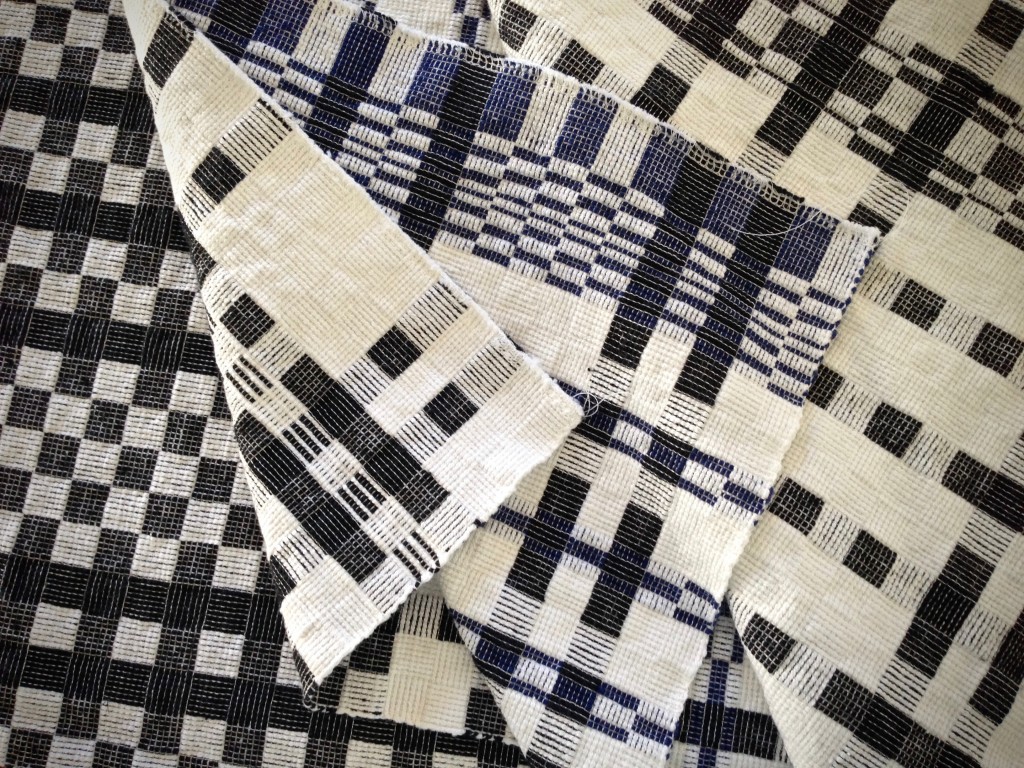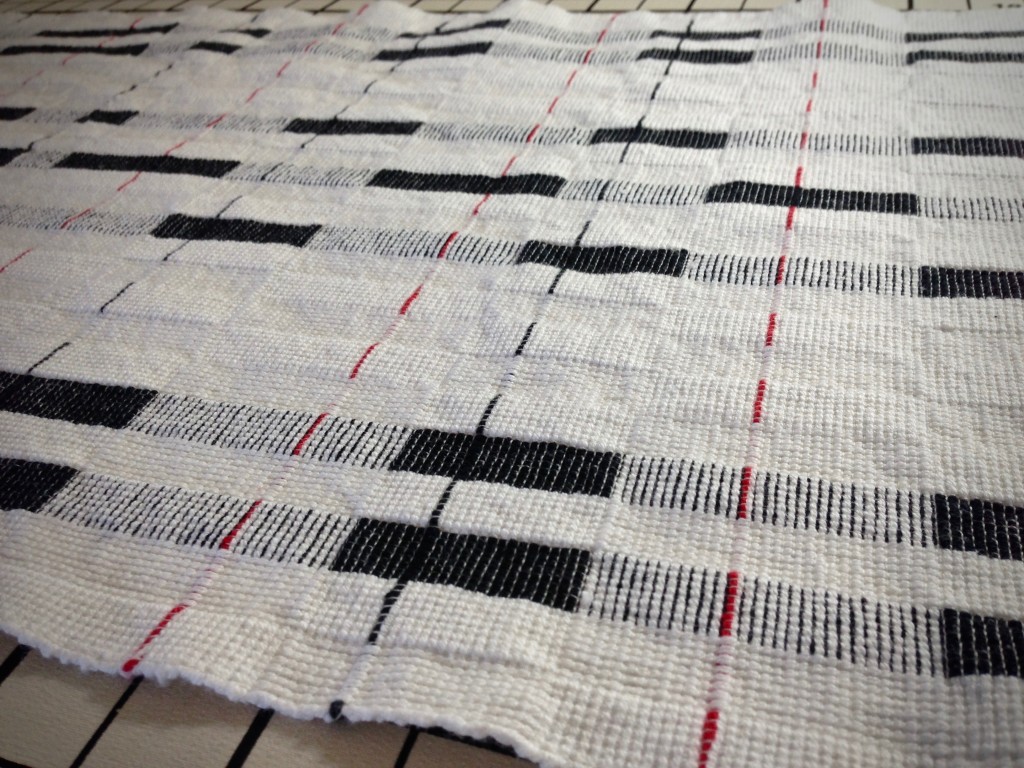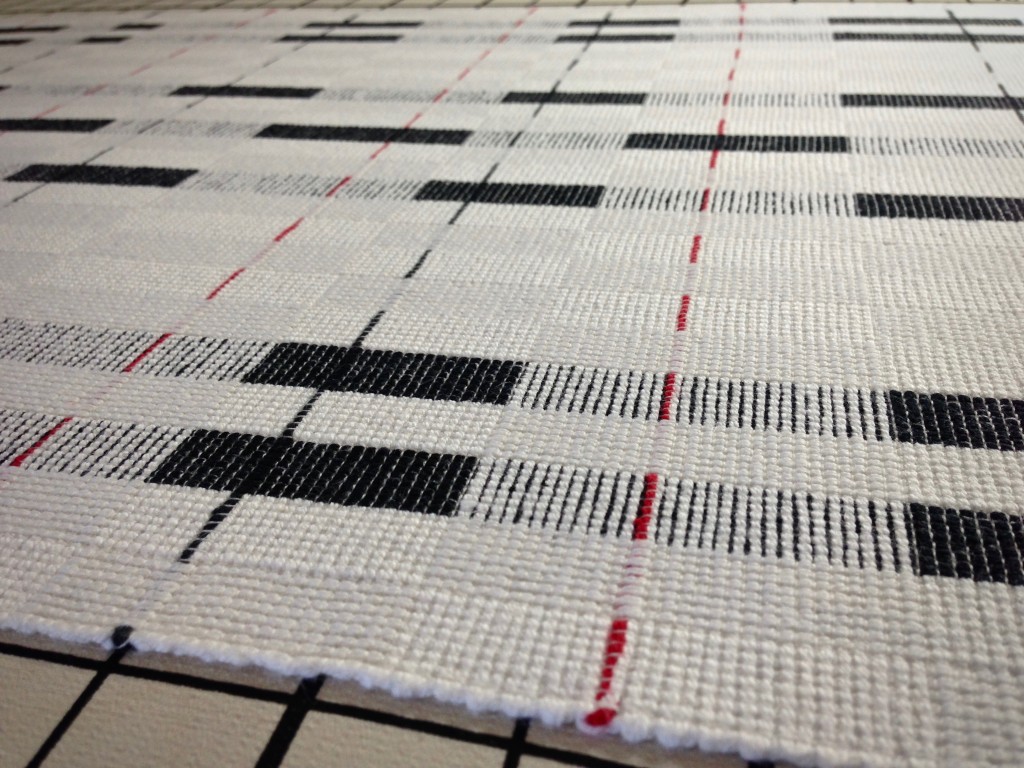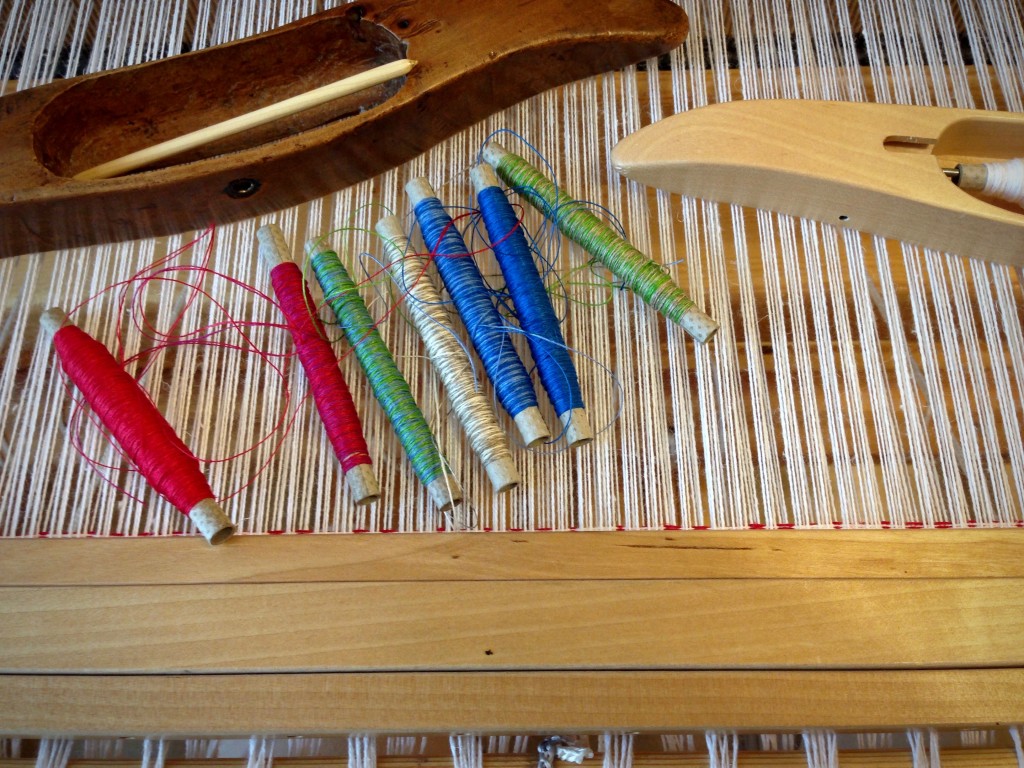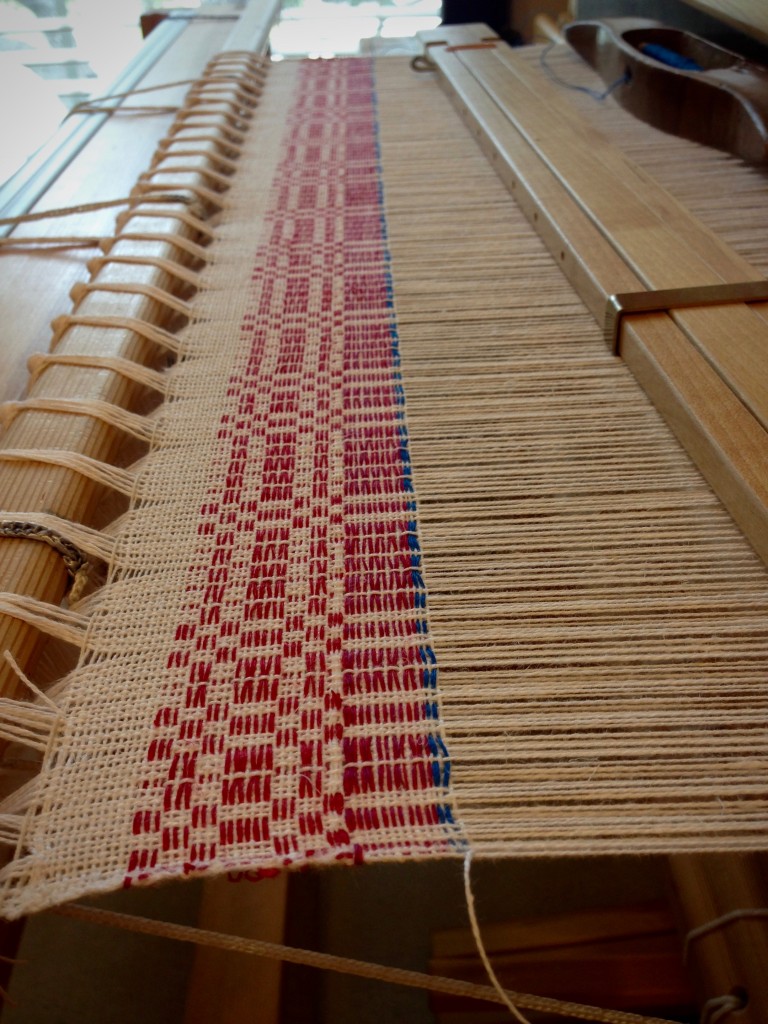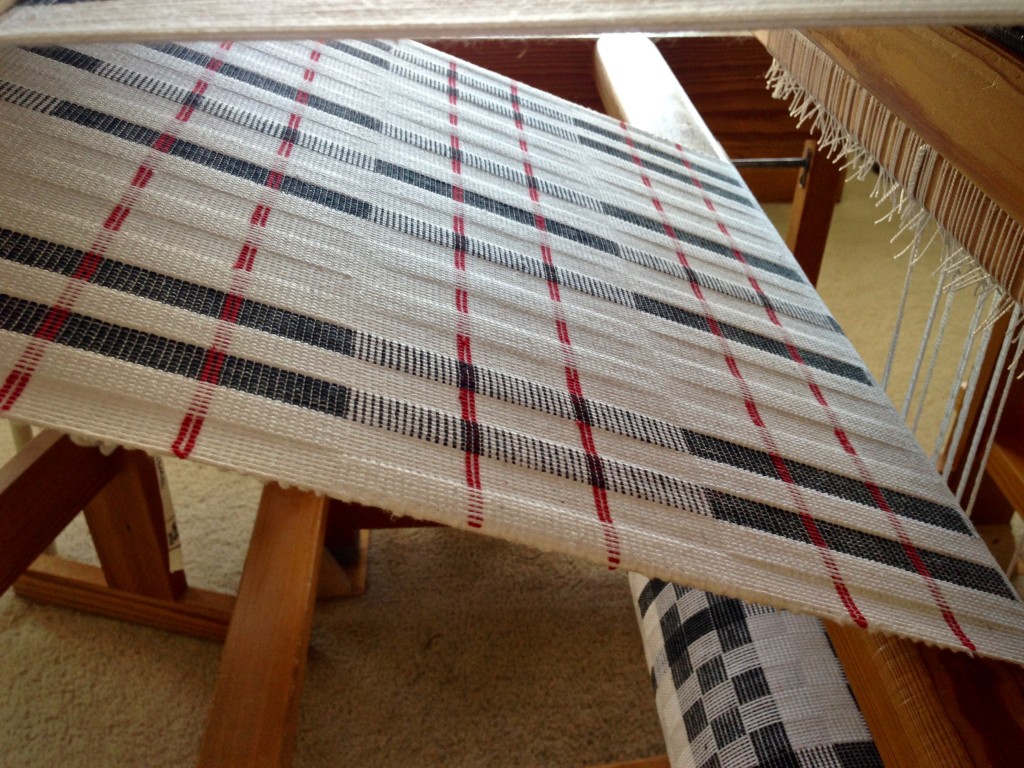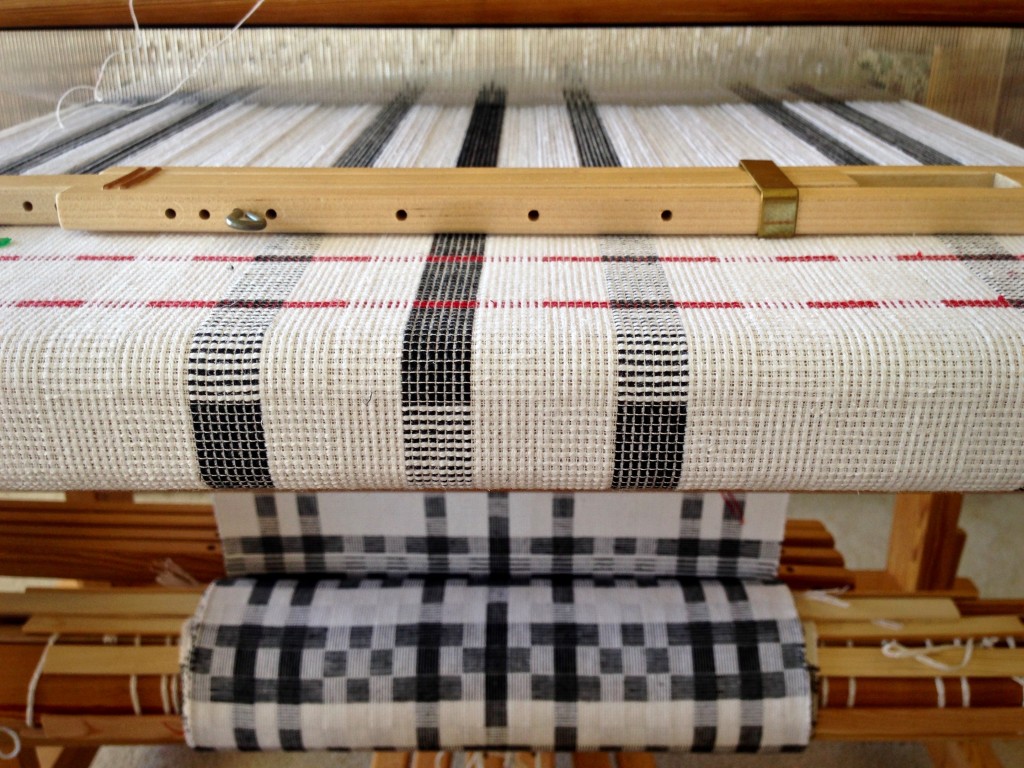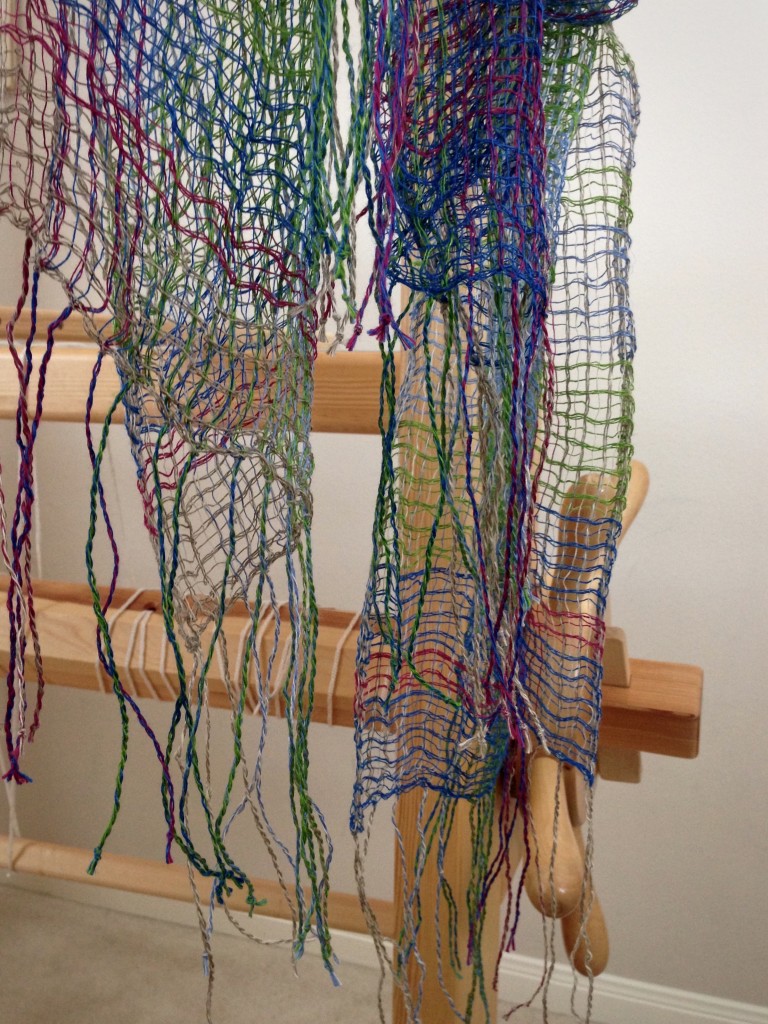I have forty-five shades of Fårö wool. That’s better than a giant box of crayons! Monksbelt and Fårö wool–is there anything better?! I have narrowed it down to nine colors. For the weft rep ground weave, a few tubes of 16/2 cotton off my shelves will do nicely.
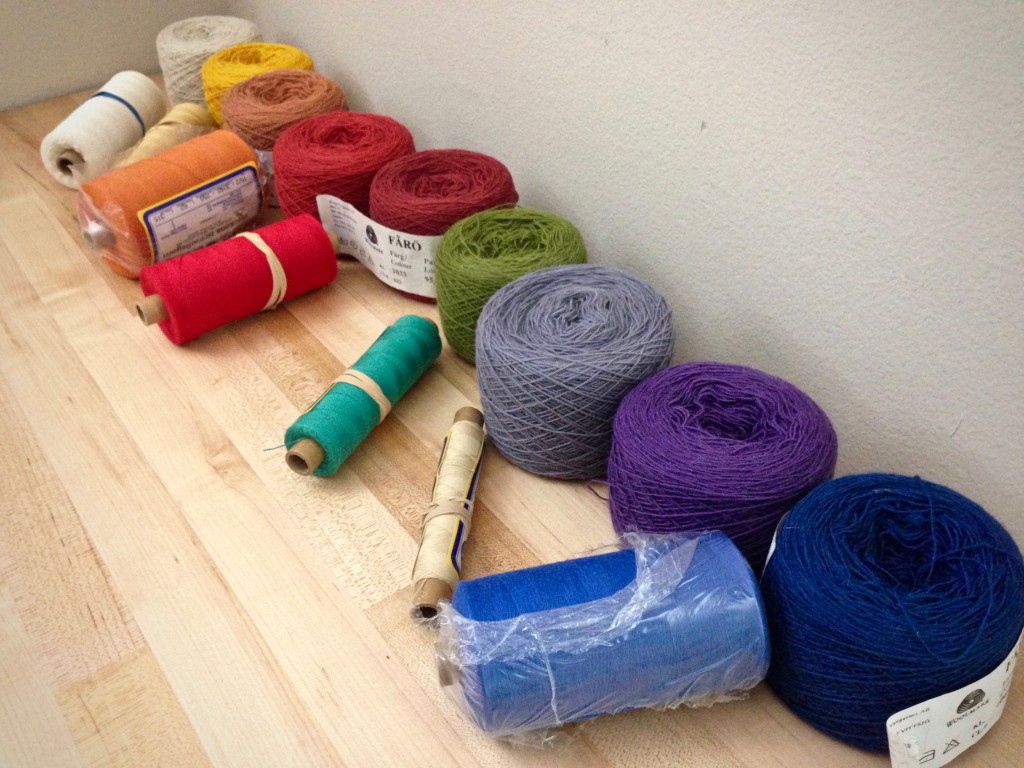
As always, I sample to see what works, and what doesn’t. I want a collection of colors that make a strong, but peaceful, statement. One misplaced color will spoil the effect. After trying various wool and cotton combinations, I see that the teal cotton must be removed. This color is welcome in other settings, but here it is out of place.
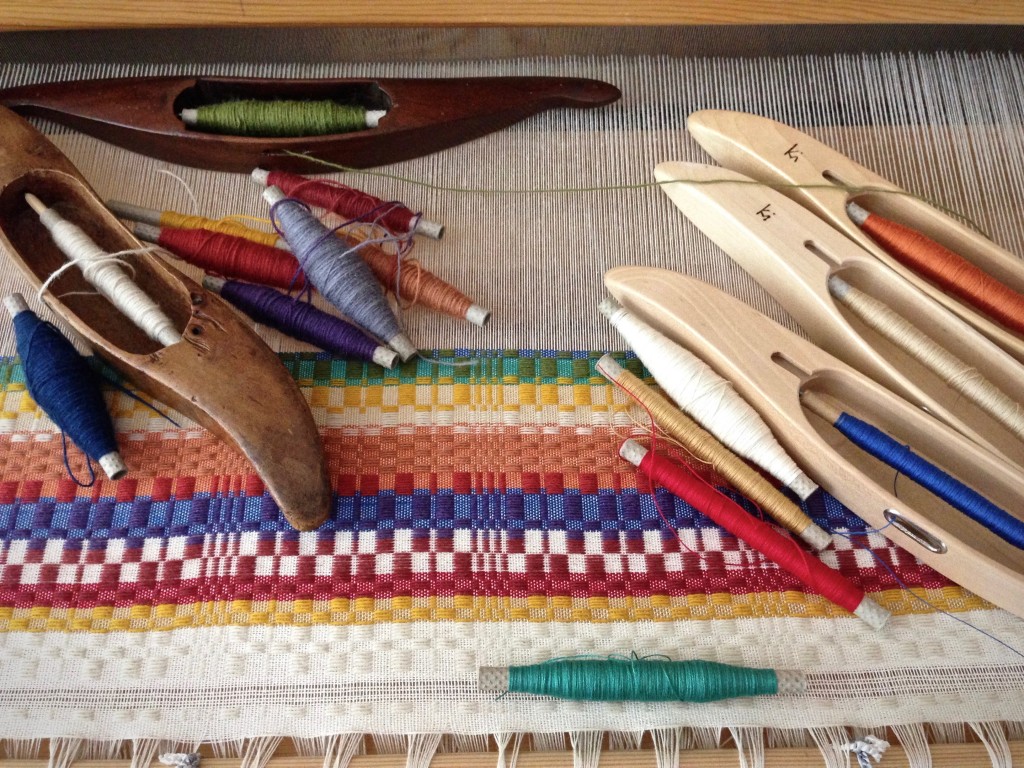
Faith is like a determined collection of colors that are meant for each other. Do not underestimate the power of faith. When lined up like close-knit friends, when put into action, when woven into the warp, it’s phenomenal! However, faith is strongest when fear is removed. Taking the teal out of the lineup makes all the difference. Now, I weave this with confidence, knowing it works. Have you heard the account of Jesus calming the storm? He told the wind and waves, “Be still.” Strength and peace. That’s the power of faith.
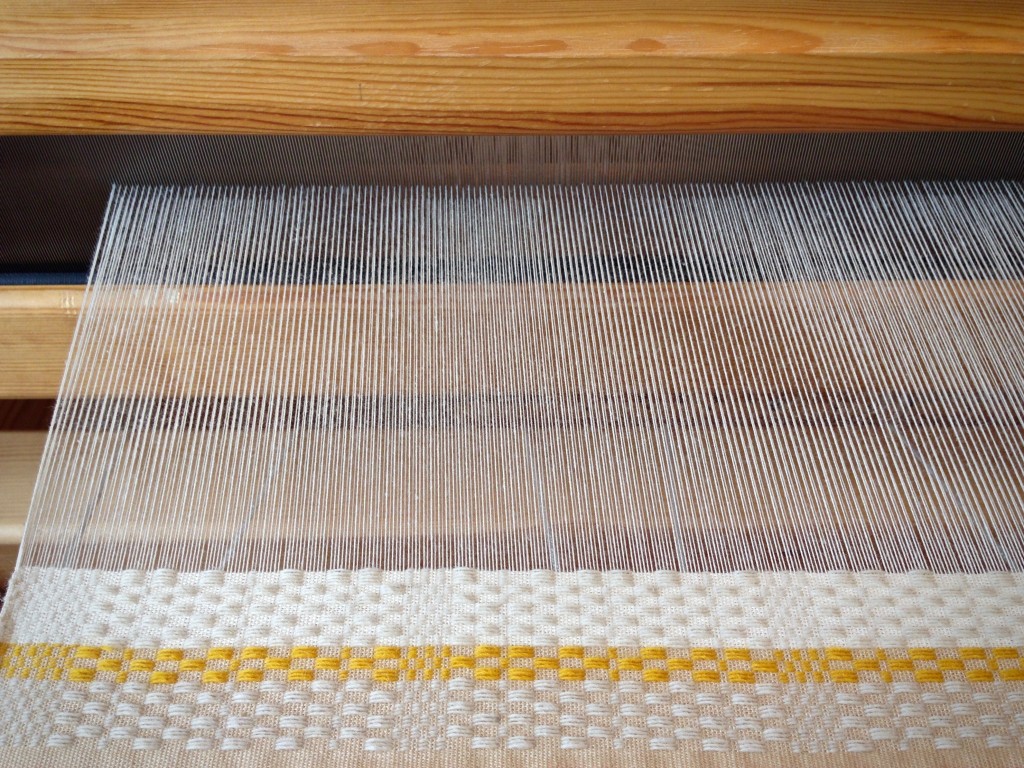
May you find the color that needs to be removed.
With strength and peace,
Karen


